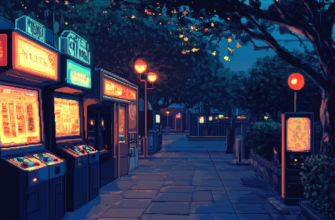- Why gamers are obsessed with open-world games
- What’s the deal with open-world games?
- What makes them so much better?
- The most iconic open-world games (and why we love them)
- How do open-world games increase immersion?
- Here’s why immersion works particularly well in open-world titles:
- Practical tips for enjoying open-world games
- Tip 1: Don’t rush the main story
- Tip 2: Explore every nook and cranny
- Tip 3: Play your way
- Tip 4: Upgrade your hardware for smoother performance
- Conclusion: Why the open-world genre isn’t slowing down
Why gamers are obsessed with open-world games
Hey bro, if you’re anything like me, you’re probably a sucker for freedom. And you know what? That’s exactly why so many gamers (myself included) go nuts over open-world games. There’s just something about getting lost in a massive virtual world, taking your own sweet time to explore, do quests, or just mess around. I’m going to break down exactly why gamers love open-world games as much as they do and why these types of games are the ultimate in immersion and fun.
What’s the deal with open-world games?
First things first, let’s talk about what makes a game “open world.” In an open-world game, you’re not confined to a linear storyline or restricted to going through each level in a predefined order. You can roam the game world however you like. Want to hit story quests to beat the game? Go for it. Rather spend hours exploring hidden caves or picking flowers in some forest? That’s on you too. It’s all about choice and player agency. You decide how you want your game to unfold.
What makes them so much better?
It’s not just about freedom, though. Gamers love open-world games for a slew of reasons, from the immersive environments to the variety of gameplay options. Let’s break that down:
- Exploration: The freedom to explore and discover hidden gems at your own pace. No need to worry about rushing to meet the next checkpoint – you can chill and take in the sights.
- Immersive storylines: Often, open-world games feature storylines that are complex, engaging, and allow you to dive deep into side quests. You get this awesome mix of main objectives interwoven with optional missions that let you shape character arcs, factions, and relationships.
- Dynamic environments: Open-world games bring massive, well-designed worlds where changes in day/night cycles, weather, and NPC (non-playable character) interactions make everything feel more alive. You don’t just play the game – you live in it.
- Customization: With all the side quests, loots, and mods, you get to make your character look and feel exactly how you want. Whether it’s their weapons, armor, or skills – you control it.
- Emergent gameplay: Things happen that aren’t scripted – like random encounters or dynamic world events, making each playthrough unique even for players who’ve already completed the game.
The most iconic open-world games (and why we love them)
There are tons of open-world games out there gaining legendary status. Some of them have redefined how we play, adding even more layers of depth and excitement to the genre. Here are some of the heavy hitters:
- The Witcher 3: Wild Hunt: Bro, this one’s a masterpiece. The richness of the world, side quests, and storytelling are unreal. Geralt’s journey feels personal to every player, thanks to all the choices you make on the way.
- Grand Theft Auto V: Talk about a sandbox that gets chaotic fast! GTA V is not only about missions, but it’s also about kicking back and causing mischief in Los Santos. The mini-games, heists, car chases – all of it is pure fun.
- Red Dead Redemption 2: Rockstar did it again. With an amazingly detailed world, Red Dead Redemption 2 offers breathtaking environments and a story that grips your soul. It’s one of the most immersive open-world experiences out there, leaving you thinking about it long after you shut down your PC (been there, done that).
- The Legend of Zelda: Breath of the Wild: For Nintendo fans, this game shows how environmental puzzles and exploration can reach new heights. Every inch of Hyrule is oozing with adventure and things to tinker with.
How do open-world games increase immersion?
Immersion basically means how “sucked in” you get during gameplay. Open-world games nail this aspect better than any linear titles. I can’t count the number of times I’ve totally forgotten the real world exists while I’m running through some dense forest or scaling a mountain in an open-world game.
Here’s why immersion works particularly well in open-world titles:
- Life-like environments: That sense of being right there can stem from little details like wind blowing through the trees, NPCs reacting realistically, or wild animals crossing your path. Designers work insanely hard to make these worlds feel real, and it pays off big time by making us feel like we’re really “in” the game.
- Mission variety and pacing: I’m all for variety, man. Some days I wanna be a hero, other days I just want to try and catch rare animals. Open-world games guarantee there’s something for every mood. You don’t feel rushed and can tackle the game your way.
- Player-driven stories: Tons of open-world games allow players to make crucial decisions that alter the storyline. When you’re given real choices with actual consequences, you feel a stronger connection to everything happening in the game. You get that much more invested.
Practical tips for enjoying open-world games
So, if you’re new to open-world games or just want some pro-level vibes thrown your way, here’s what I’ve picked up from spending way too much time on these games. Trust me, these tips will take your gaming experience to the next level:
Tip 1: Don’t rush the main story
Open-world games aren’t one-and-done-type experiences – savor them! The main storyline might be compelling, but don’t feel obligated to rush through it. Take breaks, do side quests, meet new characters, explore off the beaten path. The real joy of open-world games is often in doing things you don’t “have” to do.
Tip 2: Explore every nook and cranny
These worlds are designed with so much detail that it’s a crime not to explore them. You’ll stumble across treasures, hidden easter eggs, and even random world events that you’d otherwise miss. Who knows? You might even find that one overpowered weapon tucked away in a cave or temple somewhere.
Tip 3: Play your way
Don’t get caught up in how others say you should play an open-world game. Some people like being completionists who hit 100% on every task; some prefer speedrunning through the main quest. You do you, bro. If you’re having fun, you’re doing it right.
Tip 4: Upgrade your hardware for smoother performance
Some open-world games (looking at you, Cyberpunk 2077) can be pretty demanding on your PC. If you’re finding performance issues, like lag or frame drops, consider upgrading your GPU or increasing your RAM. And hey, tweaking in-game settings like reducing shadow quality or lowering anti-aliasing can also make a huge difference in performance.
Conclusion: Why the open-world genre isn’t slowing down
Open-world games show no signs of losing popularity. In fact, if anything, they’re only getting bigger and better as tech improves. It’s no wonder we gamers keep coming back to them: the freedom, the immersion, the massive, rich worlds that react to our choices. These games allow us to be anyone, go anywhere, and do anything, at least in the digital realm. And honestly, until real life gets as fun as Night City or the Skellige Isles, I don’t see myself stopping anytime soon.
So, whether you’re riding horseback through vast plains or plotting the next big heist, open-world games are here to stay. If you haven’t played one yet, trust me – you’re going to love it. And if you’re already a veteran, then you know the best is yet to come.
Have an open-world recommendation or want to add some game-changing tips? Drop a comment below and let’s chat!

















